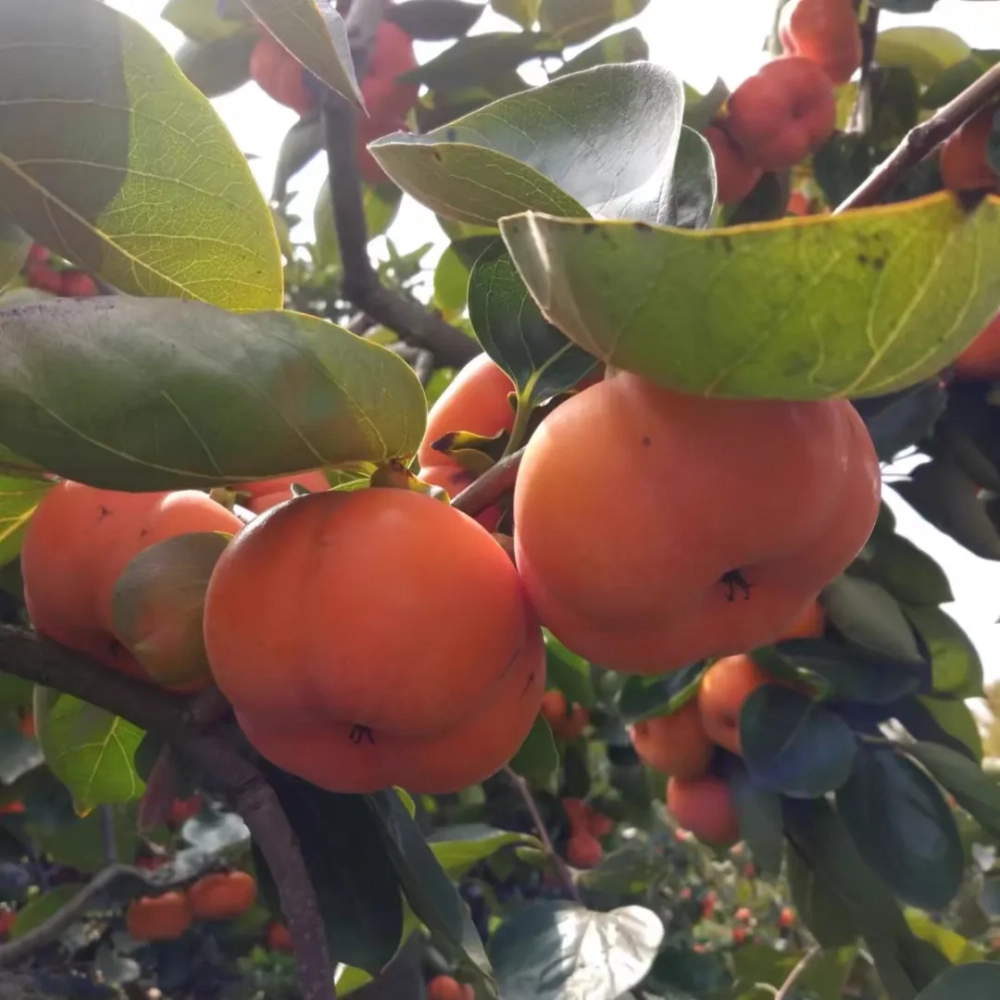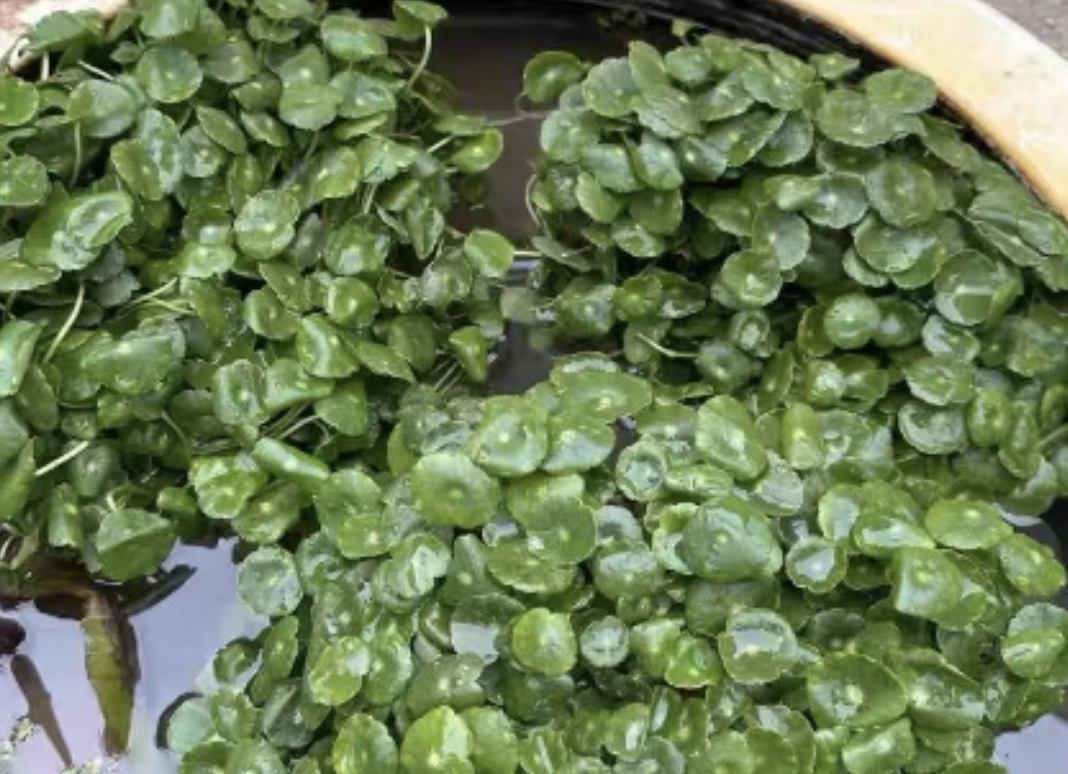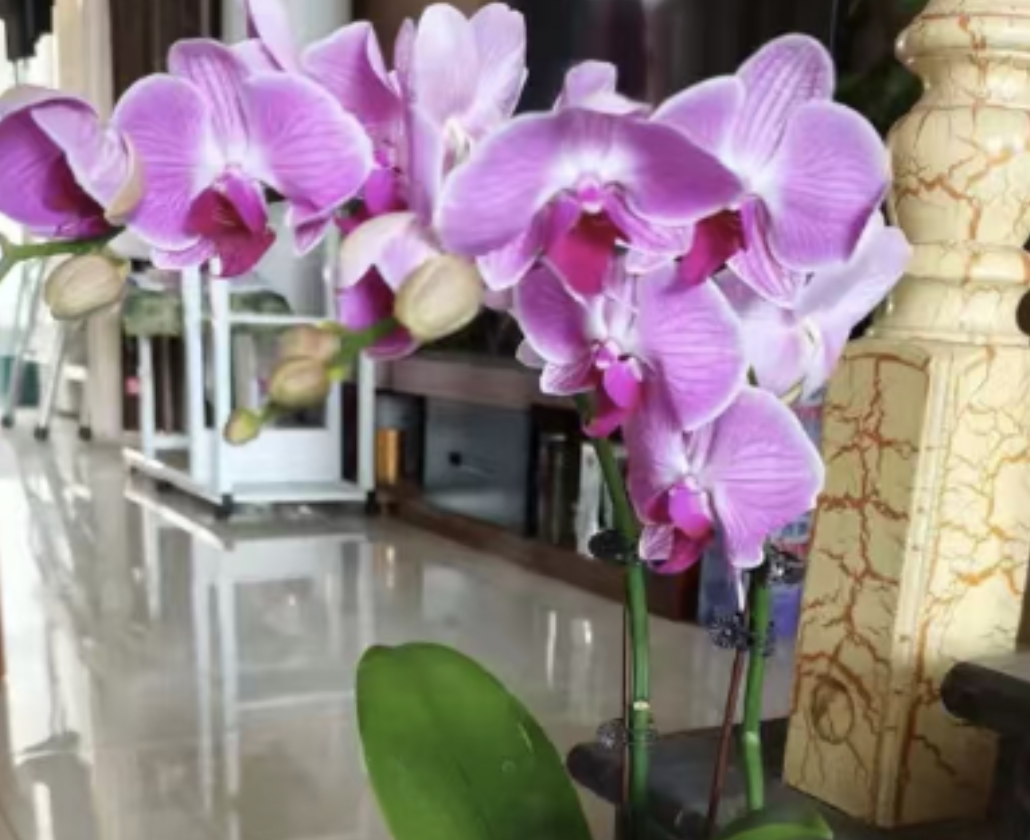The persimmon family is quite large, and common ones include soft persimmons and crisp persimmons. When soft persimmons are ripe, their pulp is soft, glutinous, sweet and fragrant. With a gentle suck, the sweet juice spreads in the mouth. Examples include Fuyu persimmons and Jiro persimmons. Crisp persimmons, on the other hand, have a crisp and refreshing taste and are sweet and delicious. The Niuxin persimmon is a representative among them.
Persimmons are rich in a variety of nutrients, and the content of vitamin C is quite significant. Vitamin C is like a little guard in our body. It can enhance the immune system and promote the synthesis of collagen, keeping our skin elastic and shiny. Meanwhile, persimmons also contain a large amount of carotene, which can be converted into vitamin A in the human body and plays an important role in protecting our vision. It's like putting a "protective shield" on our eyes to prevent eye problems such as night blindness.
In terms of medicinal properties, persimmons also have the effects of moistening the lungs and relieving coughs, and are quite effective for coughs caused by lung heat. They can clear heat and promote fluid production to relieve dry mouth. At the same time, they are helpful for strengthening the spleen and resolving phlegm, which is beneficial to the health of the spleen and stomach.
Although persimmons are good, there are some foods that should not be eaten with them. Crabs are cold in nature, and eating them together with persimmons is likely to damage the spleen and stomach, causing abdominal pain and diarrhea. Moreover, the protein in crabs combines with the tannic acid in persimmons and may form substances that are difficult to digest in the body. Sweet potatoes produce stomach acid in the stomach, and when it reacts with the tannic acid in persimmons, it is easy to form hard lumps, which may lead to bezoar of persimmon in the stomach and cause stomach discomfort. Alcohol stimulates the gastrointestinal tract, and eating it with persimmons may accelerate intestinal peristalsis, increase the chance of tannic acid combination, and lead to intestinal dysfunction.
Next, I'd like to share with you the planting and maintenance methods of persimmons so that you can easily have persimmon trees full of fruits.
Persimmon trees are usually planted in spring or autumn. For spring planting, it should be done after the soil thaws and before the saplings sprout. For autumn planting, it should be carried out after the leaves fall and before the soil freezes. This can help the saplings better adapt to the new environment and improve the survival rate.
Persimmon trees like an environment with sufficient sunlight. Adequate sunlight enables persimmons to carry out photosynthesis better, accumulate sugar, and make the fruits sweeter. They have relatively strong adaptability to the soil, but soil with deep layers, good drainage and rich in organic matter is preferred.
Before planting, it is necessary to dig planting pits first. The size of the pits should be determined according to the size of the root system of the saplings. Put the saplings into the pits and make the root systems stretch out. Then fill the pits with soil. During the filling process, gently lift the saplings to make the soil fill the gaps between the root systems. After filling, water them thoroughly to ensure the root-setting water is sufficient.
The daily maintenance of persimmon trees is also very important. In terms of watering, persimmon trees are drought-tolerant, but during the growing season (flowering period and fruit expansion period), it is necessary to ensure that the soil is moist, water thoroughly and avoid waterlogging. During the winter dormancy period, reduce watering. In terms of fertilization, young trees mainly use nitrogen fertilizers and are fertilized before sprouting in spring and during the vigorous growth period in summer. Adult fruit-bearing trees are fertilized with different fertilizers in different periods, such as fertilizing as needed before sprouting, during the fruit expansion period and after fruit picking. In terms of pruning, in winter, cut off dead branches, diseased branches, overly dense branches, crossed branches, etc., and retract overly long branches. In summer, pinch off the tips of new shoots and twist the shoots. In terms of preventing common diseases, such as persimmon angular leaf spot and anthrax, use fungicides for timely treatment when they are found. To control common pests such as persimmon mealybugs and persimmon fruit moths, use corresponding insecticides to kill the pests in specific periods.
What are the efficacy and functions of persimmons?

Share with
Tagged in :




Leave a Reply